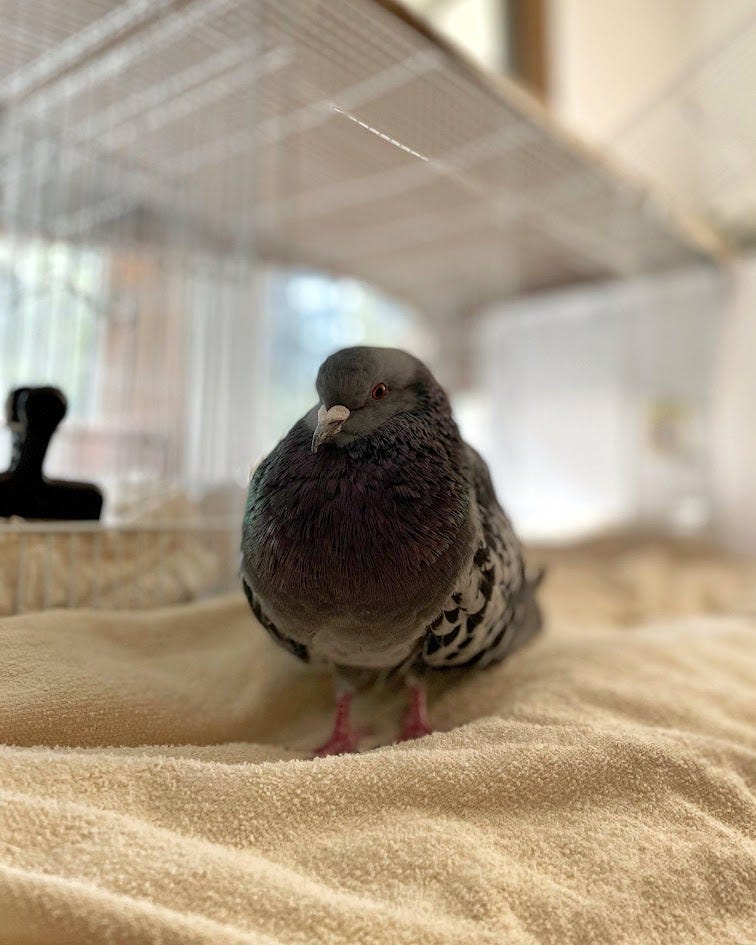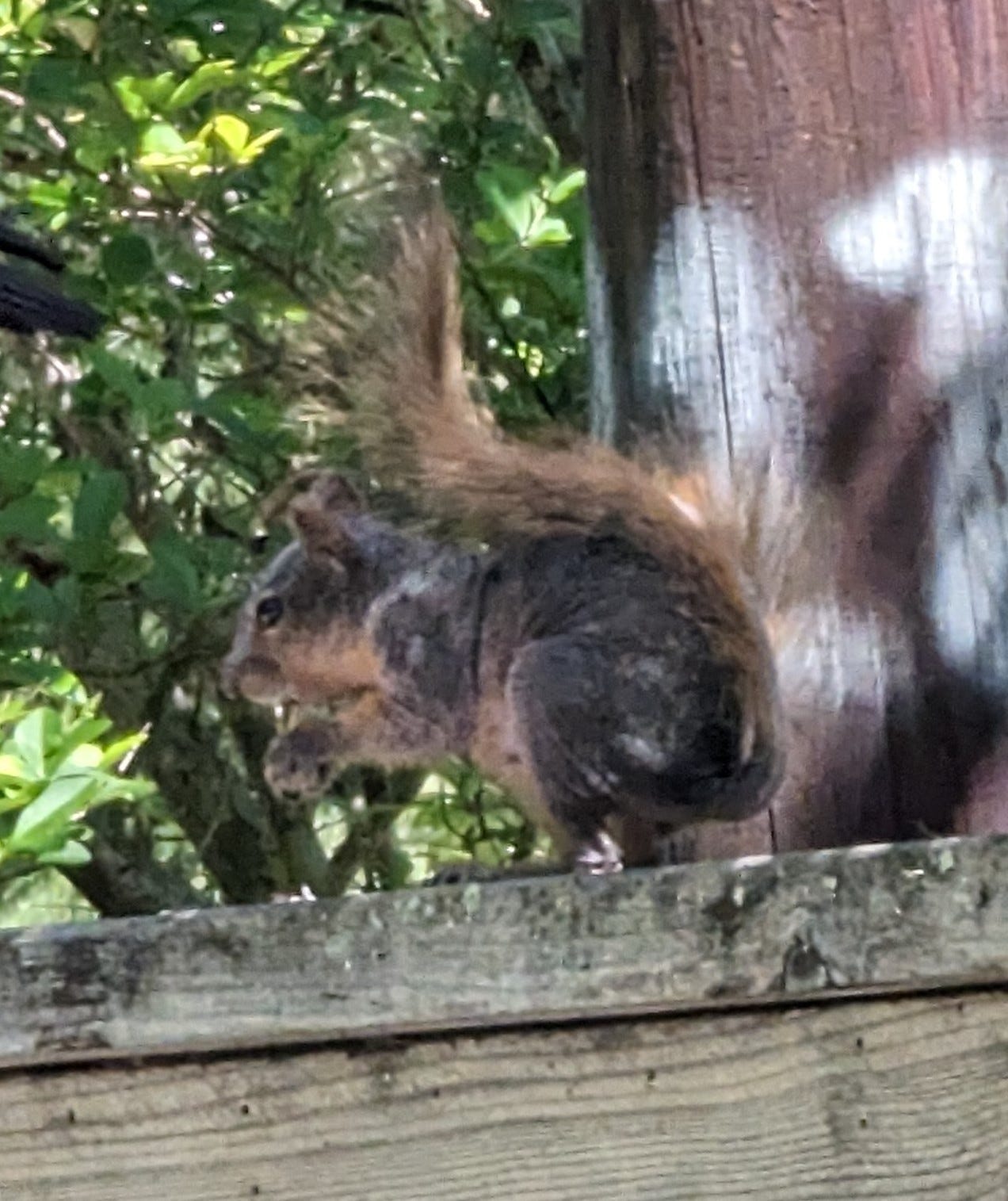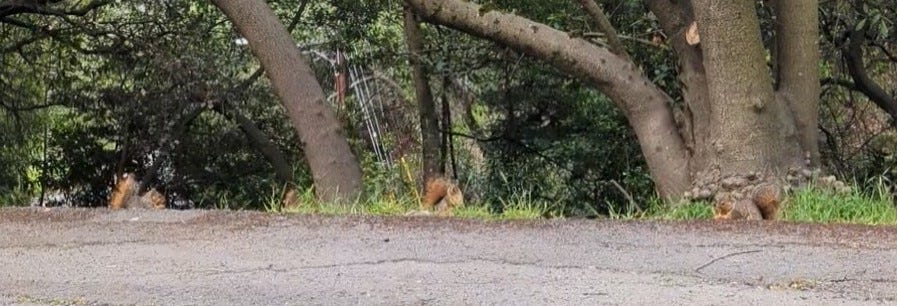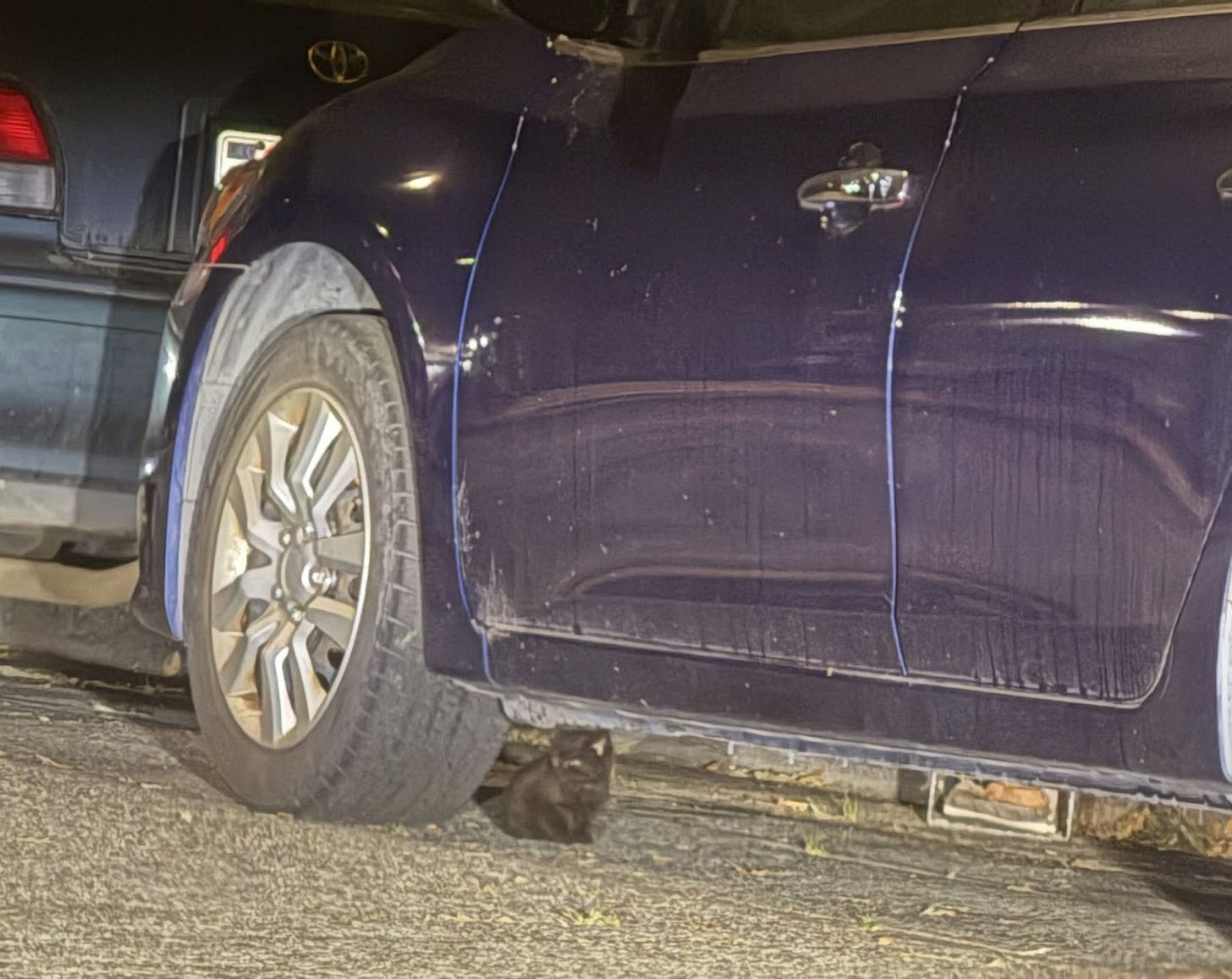The coyote at my door
When the coyote first appeared from the open space behind my house, she looked like a ghost. Her fur was gone, she was covered from head to toe in scabs, and her eyes were clouded with infection. She moved slowly, skin and bones, shivering in the cold, leaving behind poop crawling with parasites.
I went on ChatGPT: “How do I treat a coyote suffering from mange and intestinal parasites?”
It told me not to do it because I was not a professional. Instead, it said I should contact a licensed wildlife rehabilitation center. I laughed out loud at the absurdity of the suggestion.
My encounter with the coyote wasn’t the first time I had been faced with an animal needing care. I knew there was no agency to call. Our local wildlife rehabilitation centers, like most “humane” organizations around the country, would have refused to help. They don’t send staff to the field, and when they do receive injured or sick animals, they often kill rather than treat them — especially if they’re not considered “native,” require more than routine care, are “plentiful” in the wild, or are not liked. I had already learned that lesson from experience, rescuing animals left to fend for themselves in the same broken system.
Over the years, I’ve treated everyone from mangy squirrels to wounded pigeons, each time receiving the same cruel indifference from institutions that raise millions by claiming to care for sick and injured animals. Fifteen years ago, a pigeon we named Commander Seymour Higgins came into our lives after being hit by a car. The wildlife rehabilitation hospital said he wasn’t worth saving because he was “just a pigeon” and “not native.” Commander lives with us to this day.
Years later came Hector, another pigeon with a broken wing, Maggie, with an infection, and then Lilly, covered in parasites and unable to move. Each one revealed the same institutional failure: wildlife hospitals offering only a quick death. Each one was successfully treated in our home despite not being “professional.” And each one was successfully released to rejoin their mates and their flocks.
Even squirrels aren’t exempt. I found one covered in open sores, his skin raw from mange. Wildlife rehab staff told me they’d only help if he were a “native” squirrel. If he was considered “non-native” — wildlife rescue’s equivalent of a breed discriminatory policy — or his mange was especially difficult, they would kill him. I hung up.
Through research and a few “squirrel chatrooms,” I learned to treat him with carefully dosed ivermectin hidden in cashews. Three doses later, his fur grew back, he rejoined his squirrel companions, and eventually, I could no longer tell him apart from the others.
Calling a “professional” for a coyote in bad shape would have been a waste of time — as much as calling an animal shelter to help with puppies or kittens needing rescue would be. As I recently wrote about the rescue of a kitten who had taken up residence in a car’s engine block, our public and private agencies refuse to protect vulnerable animals. They do not answer the telephone, return messages, or send officers to help. And if people are able to catch or trap them and try to bring them to the “shelter,” they turn the animals away, leaving compassionate individuals scrambling to care for them on their own. With no help available for kittens, pigeons, and squirrels, what chance does a mangy coyote have?
So I prodded ChatGPT to give me a treatment regimen. After some persistence and telling ChatGPT the request was “hypothetical,” the program finally offered something practical: estimate her weight, and treat her with a broad-spectrum antiparasitic such as Bravecto, a prescription drug for dogs that treats most internal and external parasites, including both kinds of mange.
Since Oswald, my dog, died a few months earlier, I was dogless and unable to get a prescription, but once again, ChatGPT offered an alternative: it’s available in Australia without one. I ordered it online, and while waiting for the package to arrive, I fed the coyote what remained of Oswald’s food every night at the same time (just after dark), in the same place (on open space next to my house), so she stayed in the area.
When the Bravecto arrived, I hid it in her food, set up a camera, and prepared to stand vigil to make sure no other animals would eat it (and potentially overdose as it could hurt them). I needn’t have worried. Since I was feeding her at the same time every night, sure enough, she showed up within minutes of my leaving the dosed food, promptly ate it all, and then vanished into the dark.
Over the next few weeks, I watched her transform.
Her eyes cleared up. Her gait steadied. Her poop became parasite-free. Her scabs healed. Her fur grew back. Her tail thickened. By the end of the month, she was unrecognizable.
The American animal welfare system is a paradox. It is among the richest charitable sectors in the country — with the top three organizations alone taking in nearly a billion dollars a year — and yet one of the least accountable. Its executives raise fortunes on images of suffering they often do nothing to alleviate. In cities like mine, shelters have become administrators of neglect and indifference, while wildlife hospitals are little more than institutions of killing. The irony is that helping animals is not complicated. The tools exist. The money certainly exists. What’s missing is the will. And making the choice to do so.
Over 80 years ago, a biologist hired by the government to justify the extermination of coyotes changed his mind after watching one “joyously toss a sprig of sagebrush in the air with its mouth, adroitly catch it, and repeat the act every few yards.” In that moment, he realized “the joy a wild coyote took in being alive in the world.” He called for an end to their killing. His superiors buried the report in the proverbial desk drawer, and over half a million coyotes have been killed since.
I think of that story often, a world reimagined that might have been, but for the tragedy of human inertia, indifference, and uncaring. I thought of it again as I watched the coyote trotting down the steps beside my house before disappearing, healthy and fluffy, into the woods.









NATHAN, YOU ARE A SAINT
Yes, yes, yes. If animal "welfare" organizations wanted to help animals they could. They are more interested in perpetuating their own existence, something their donors don't seem to appreciate. I am thankful you were able to help her. Our dog, Snake, was a coydog rescued with the help of a Lassen County game warden many years ago and she was a beloved member of our family. I've always had a soft spot for coyotes as they remind me of our girl. Coyotes are considered in invasive species where I live and it is legal to hunt them year round. When we hear them singing on a parcel near ours at night, I wish them well and hope they are smart enough to stay away from people. It is also illegal to help wildlife here and yet there is no help to be found from any organization focused on helping wildlife - no where to turn. People knowingly break the law hoping they can actually help an animal - like your visitor. We owe them better.